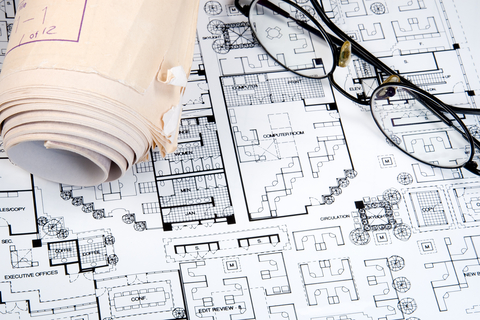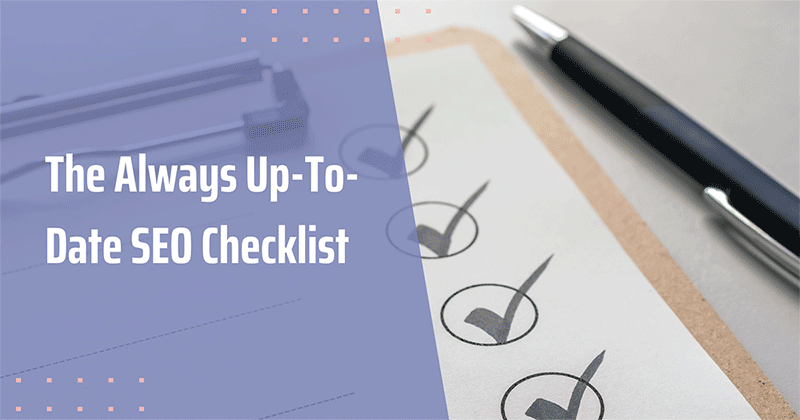Tips for SEO Web Design and Site Architecture
| Estimated reading time: 4 minutes Audience: SEO 101ers Top takeaways: • The code used to design and develop your site can help or hinder your search engine optimization efforts. • The way you structure the content on your site is a large part of your SEO strategy. • Don’t forget about the back-end of your site as an important part of its SEO health. |
You have a website that you’re pretty proud of. It’s beautiful in every way (and of course, “perfect” to you because it’s your baby). But you’ve decided it’s time to really focus on SEO and you’re not quite sure what the beginning steps are for restructuring and redesigning your site in a way that’s SEO friendly.
And once you start really examining the structure, design and the back end of your site, you’re finding out that beautiful, perfect baby is actually really ugly and stinky. And an ugly, stinky baby = big, messy problem for SEO.
In this post, we’ll take a very high-level look at some of things you want to address to make sure your site is set up for SEO.
Designing/Developing Sites for SEO
- Make your code as clean as possible for the spiders to crawl quickly. You want to avoid code bloat when designing and developing your site. The more you can simplify and streamline the code, the better. It’s helpful to understand basic HTML so you can identify unnecessary tags. Software like Adobe Dreamweaver can help you clean up your code.
- One way to ensure your code is clean is to validate by World Wide Web Consortium (W3C) standards. Web pages that are W3C compliant are considered to be healthy and spiderable by the search engines. Run the validator and address the important errors. W3C also provides tools to validate CSS, so you can see if any design elements are causing issues. Use the data provided by this tool plus your wisdom to decide which errors to address that may be affecting the health of your site and SEO.
- Externalize the code so that you can further streamline your pages for loading and crawling purposes. Externalizing CSS and JavaScript reduces the size of your page, reducing the file size of what your browser needs to load and making the content-to-code ratio higher, which is good for SEO.
- If you’re just starting out and haven’t designed the site yet, consider developing in HTML5. The functionality of HTML5 offers sleek presentation – the type that many aim to achieve with software like Adobe Flash, but HTML5 is much more SEO friendly.
Website Content Architecture
- Designing a site for SEO starts with your content structure. As we’ve been saying for years, content is at the heart of your SEO efforts. Architect the site by categorizing your content into themes, which will ultimately serve as your navigation. The architecture of the site is driven by both user experience and keyword research. You want to design the site in a way that’s set up to be found for the queries your target audience is using when looking for products and services similar to yours. Then you want to deliver the most relevant and useful information on those topics. Learn more about this by reading our content on theming a site through siloing.
- Since the navigation helps to clearly communicate to both your users and the search engines what the site is about, the nav structure needs to be clear and easy to follow. It needs to be both user-friendly and allow the search engine spiders to crawl with ease, associating related topics together in a cohesive manner. You also want to make your navigation elements crawlable, so creating them in text is useful since you’ll also likely be using keywords in your nav.
- Individual Web page construction is important, too. Ensure your Head section that contains your Meta tags (Title, Description and Keywords) is at the top of the page, so it’s one of the first pieces of code the spider encounters. You want to, as quickly as possible, convey to the spider what the page is about. Use CSS positioning for tags to reorder the code if it looks as if other mounds of code are piled on top of the Head section (such as navigation or design code).
Back-End Support
- Check to see if your server is in good health. You need a server that is going to deliver your site quickly to the user. Site speed is a confirmed ranking factor in Google’s algorithm. Try our free site checker tool to see how yours stacks up.
- Look at your content management system. How easy will it be to make changes and enforce search engine optimization in your CMS? If you don’t have an SEO-friendly CMS, your efforts are going to be laborious. Some of the things to look for when choosing a CMS is the ability to control your directory structure, have customizable Web page elements (like the Head section), the option to externalize the CSS and JavaScript, opportunities to create custom rules that can apply to many pages at once, and a CMS that generates clean code. Basically, customization, flexibility and ease of use are key. There are several options out there; we use Pixelsilk.

8 Replies to “Tips for SEO Web Design and Site Architecture”
Lots of good tips here. I try to follow some of them myself but it’s always a battle.The trend in web design these days is definitely towards clear and simpler design. The days of splash screens, flash and “illustrated” websites with graphics thrown in for the sake of filling space seem to be drawing to a close.
the most difficult is not developing the website, but it is how to come up with content, especially if your website is eCommece website. But mostly I would recommend my customer to blog.
Absolutely excellent article. Many people wasting their time trying to design the perfect page by focusing only on the image of it, without thinking about the functionality or even the speed that it loads (which another important aspect of a website) and this is the reason why so many good looking sites rank so low at search engines.
Great Post! I’m a web master with almost 10 years experience in the field. I just want to give my tips that have helped me through my career:
1. On-page content should have a minimum of 250 words in the inline content.
2. Once you have your minimum 250 words, its vital to have scan-able line paragraphs to make content easily scan-able.
3. If you’re talking about more then one product or service separate each using various header tags
4. Keyword Density: Over-using keywords is as bad as under-using them. The ideal keyword density is between 2% – 5%.
One aspect of site design that I think needs more focus is speed. I’m shocked at how many sites (WordPress run especially) will keep adding script after script and not realize the impact that has on 1. site speed 2. user perception of your brand.
On the internet users expect sites to be fast, and when they aren’t…they bounce. I think site speed is someone we should be watching as a kind of hidden element of design.
What do you think Jessica?
Absolutely, Scott! Site speed is a confirmed ranking factor by Google and is driven by the user experience, so I agree with you there. Thanks for your comment!
Andy,
Thanks so much for the comment. It’s definitely work when sites aren’t built for SEO from the ground up, but it’s kind of fun to restructure the site and see it reap the benefits — sometimes from very small changes. Thanks for sharing your article with our readers. Have a good one!
Jessica
Great article Jessica, its always hard when someone asks me where to start with SEO, often people ask those sorts of questions when they have a horrible existing website to work with. Your article helps people get it right from the beginning. FYI I wrote a checklist of SEO tips and tricks which I feel go hand in hand with youra article. http://ajfmedia.co.uk/blog/seo/ultimate-seo-checklist-tons-of-tricks-and-tips
Cheers :)
LEAVE A REPLY










